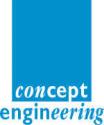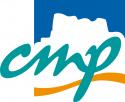UB10 Session 10
Date: Thursday 17 March 2016
Time: 12:00 - 14:30
Location / Room: Booth 15, Exhibition Area
| Label | Presentation Title Authors |
|---|---|
| UB10.1 | HIGH-END 122GHZ MINIATURE RADAR SENSOR FOR AUTONOMOUS AIRCRAFTS Presenter: Federico Nava, Heinz Nixdorf Institute - Universität Paderborn, DE Authors: Federico Nava1 and Christoph Scheytt2 1Heinz Nixdorf Institute - Universität Paderborn, DE; 2Heinz Nixdorf Institute - Paderborn, DE Abstract The importance of high precision sensors, sensors-arrays and the concept of sensor fusion are rising interest in the field of scientific research for autonomous vehicles. For this reason the System and Circuit Technology group at the Heinz Nixdorf Institute is currently developing a highly integrated radar module as a sensor for Unmanned Aerial Vehicle applications. The presented system is composed of a radar IC (130nm SiGe) with in-package antennas and operating frequency of 122GHz mounted on a FLEX-PCB including a CORTEX M4 MCU for a total size of 30x30mm. The presentation will show the FMCW/CW radar functions of the device, allowing the tracking of velocity and distance for multiple objects. The results of the radar measurements will be presented on a screen showing the raw data acquired in time domain and a FFT representation. Different objects will move simultaneously in the area of reception of the sensor. The results of the tracked distances will be then plotted on screen. Download Paper (PDF) |
| UB10.2 | AGAMID: A TLM FRAMEWORK FOR EVALUATION OF HARDWARE-ENHANCED MANY-CORE RUN-TIME MANAGEMENT Presenter: Daniel Gregorek, University of Bremen, DE Authors: Daniel Gregorek and Alberto Garcia-Ortiz, University of Bremen, DE Abstract The advent of many-core processors raises novel demands to system design. Power-limitations and abundant parallelism require for efficient and scalable run-time management. But the design of a many-core run-time manager generally suffers from exhaustive evaluation time. AGAMID is a novel research framework for design space exploration of hardware-enhanced many-core run-time management. In this demo, we use AGAMID for the interactive analysis of many-core architectures and run-time management systems. We perform hands-on comparison of RTM architectures, RTM algorithms and HW/SW partitionings. We also give insights into the design and architecture of the framework itself. Download Paper (PDF) |
| UB10.3 | COMPSOC: VIRTUALISING CONTROL APPLICATIONS ON A DISTRIBUTED COMPSOC PLATFORM Presenter: Kees Goossens, Eindhoven University of Technology, NL Author: Kees Goossens, Eindhoven University of Technology, NL Abstract In our University Booth we will demonstrate that multiple real-time control applications can be developed independently even though they share platform resources. We show that they can run together with other applications on a wireless network of multiple CompSOC platforms, where each platform has multiple processors, NOC, and a complete microkernel, streaming software, and resource management stack. We will also show that (control) applications can be quickly and safely loaded and started without interference to other (real-time control) applications, thus implementing a network of MPSOCs for distributed mixed time-criticality applications. Download Paper (PDF) |
| UB10.4 | CLASH: DIGITAL CIRCUITS IN CλASH Presenter: Christiaan Baaij, University of Twente, NL Authors: Christiaan Baaij and Jan Kuper, University of Twente, NL Abstract CλaSH is a novel compiler system for generating digital circuits as described by a mathematical/functional specification of the architecture. We will demonstrate several applications written in CλaSH: * Tunneling ball device: With a minimal amount of acceleration, a fast spinning metal disk is either sped up or slowed down so that a falling ball can fall through one of the metal disk's two holes. * Music synthesizer and spectrum analyser: An audio CODEC samples music being played from either an MP3 player or a computer. We can apply several digital filters which affect the music. The effects of these filters can be both seen on a monitor, and heard through speakers connected to the FPGA board. * Multi-processor system: The system is used in a compiler construction course, where the compiler is written in the Haskell. Because CλaSH is proper subset of Haskell, students can build and experiment with the compiler and the multi-processor system in the same environment. Download Paper (PDF) |
| UB10.5 | CONTREP: A SINGLE-SOURCE FRAMEWORK FOR UML-BASED MODELLING AND DESIGN OF MIXED-CRITICALITY SYSTEMS Presenter: Fernando Herrera, University of Cantabria, ES Authors: Fernando Herrera and Eugenio Villar, University of Cantabria, ES Abstract Mixed-criticality systems integrate applications, platform resources and requirements with different criticality. A criticality reflects the impact of either a failure of a component or a violation of a requirement, which can range from irrelevant to catastrophic effects. This booth presents the CONTREP framework, which supports UML/MARTE based modeling, analysis and design of mixed-criticality embedded systems. The booth shows a model of a quadcopter control system which integrates safety critical (e.g. flight control), mission-critical (e.g., a video processing payload), and non-critical (e.g., monitoring) functions. The booth shows how mixed-criticality is captured, together with the description of the functional architecture, and of the multi-core embedded platform where the system is implemented; how CONTREP automates different design activities, i.e. model validation, performance assessment and design space exploration, exploiting mixed-criticality information in every case. Download Paper (PDF) |
| UB10.6 | BIOVIZ: AN INTERACTIVE VISUALIZATION ENGINE FOR MICROFLUIDIC BIOCHIPS Presenter: Oliver Keszöcze, University of Bremen, DE Authors: Oliver Keszöcze1, Jannis Stoppe2, Robert Wille3 and Rolf Drechsler2 1University of Bremen, DE; 2DFKI and University of Bremen, DE; 3Johannes Kepler University, AT, DFKI and University of Bremen, DE Abstract In order to shorten the required time for the analysis of medical substances, digital microfluidic biochips (DMFBs) have been suggested. Issues such as routing and layouting are complex and currently being investigated. Although first automatic solutions assist the designers, the results are usually provided in a complex and non-intuitive fashion. Creating solutions requires testing of different setups, comparing the results and debugging of algorithms. Solutions, while being technically correct, often include negative aspects such as e.g. unnecessary cell usage. These aspects are difficult to spot without being able to visually inspect the design. Still, while designers would benefit from visualization tools, no dedicated tools have been built yet. We present BioViz, an interactive visualization tool for DMFBs that explicitly addresses these problems. Download Paper (PDF) |
| UB10.7 | WORKCRAFT: FRAMEWORK FOR INTERPRETED GRAPHS Presenter: Danil Sokolov, Newcastle University, GB Author: Danil Sokolov, Newcastle University, GB Abstract A large number of models that are employed in the field of concurrent systems' design, such as Petri nets, gate-level circuits, dataflow structures, etc. - all have an underlying static graph structure. Their semantics, however, is defined using additional entities, e.g. tokens or node/arc states, which in turn form the overall state of the system. We jointly refer to such formalisms as interpreted graph models (IGMs). Workcraft is designed to provide a flexible common framework for development of IGMs, including visual editing, (co)simulation and analysis. The similarities between the IGMs allow for links between different formalisms to be created, either by means of adapter interfaces or by conversion from one model type into another. This greatly extends the range of applicable modelling and analysis techniques. Download Paper (PDF) |
| UB10.8 | CHIMPANC: CHANGE MANAGEMENT USING CHIMPANC Presenter: Jannis Stoppe, DFKI and University of Bremen, DE Authors: Jannis Stoppe, Martin Ring and Rolf Drechsler, DFKI and University of Bremen, DE Abstract One approach to remedy the issue of increasing complexity in the hardware design process is to provide designers with more abstract languages that allow systems to be designed top-down, starting with an abstract model of the system and its requirements. Several of these languages such as SysML and SystemC are being used today. We propose the Change Impact Analysis and Control Tool (ChImpAnC) to handle these challenges. ChImpAnC extracts the relevant information from the models on the different levels and constructs mappings between them, thus allowing to check consistency and refinements, and moreover calculating the impact of changes. Thus, ChImpAnC ensures that e.g. a written specification or documentation is not made obsolete by changes in the implementation without being warned about it. Download Paper (PDF) |
| UB10.9 | IDDD: AN INTERACTIVE DEPENDABILITY DRIVEN DESIGN SPACE EXPLORATION Presenter: Stefan Scharoba, Brandenburg University of Technology Cottbus-Senftenberg, DE Authors: Stefan Scharoba, Jacob Lorenz and Heinrich T. Vierhaus, Brandenburg University of Technology Cottbus-Senftenberg, DE Abstract Due to the downscaling of transistor feature sizes, today's integrated circuits are much more likely to be affected by transient or permanent faults. In order to still meet certain dependability requirements, many different fault tolerance techniques have been developed, which can handle these faults in the field. Each of these techniques is associated with distinct costs and benefits. As a consequence, finding the fault tolerant implementation of the system that meets the actual requirements best represents a challenging task. We propose a tool that supports this process. It offers a set of hardware based fault tolerance techniques that can be applied to a given VHDL model. Afterwards, costs and benefits of the respective design choice are estimated automatically. Thus several fault tolerant versions of the design can be evaluated and compared with each other without implementing them manually. Finally, the VHDL code of the preferred design candidate can be generated by the tool. Download Paper (PDF) |
| UB10.10 | RESECU_4_AMBRAMS: TOWARDS INCREASED RELIABILITY AND HARDWARE SECURITY USING AMBRAMS Presenter: Petr Pfeifer, TU Liberec, CZ Author: Petr Pfeifer, TU Liberec, CZ Abstract AmBRAMs-The new method and developed advanced Analysis Tool and Framework for Advanced Measurements and Reliability Assessments on Modern Nanoscale FPGAs creates revolutionary new set of tools enables complex lab-on-chip solutions in nanoscale FPGAs.AmBRAMs has been enhanced of advanced measurements and data processing supporting platform identification and security support functionality including tampering detection preferably in modern nanoscale programmable devices.It will be presented on VLIW soft processor cores equipped with a security IP,and showing also POF solutions and related functionality.Detection of power voltage variation using AmBRAMs technology is incorporated in the processor application and demonstrating it on a complex processor system.Presented on 28nm LP or 20nm HP UltraScale Xilinx FPGA devices.The 28nm FPGA solution will also show simple HW adjustments enabling support of power supply change required the demonstrator and for adaptive control presented as well. Download Paper (PDF) |
| 14:30 | End of session |
| 15:30 | Coffee Break in Exhibition Area |











